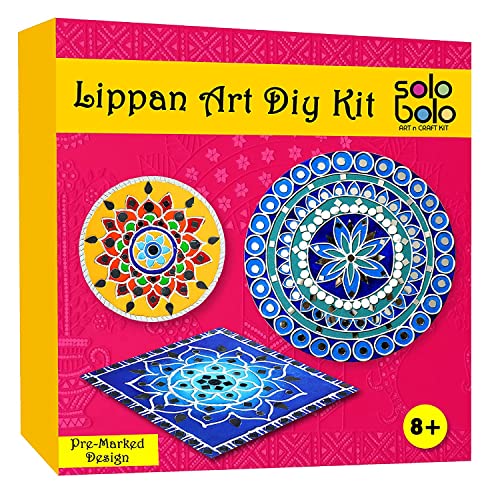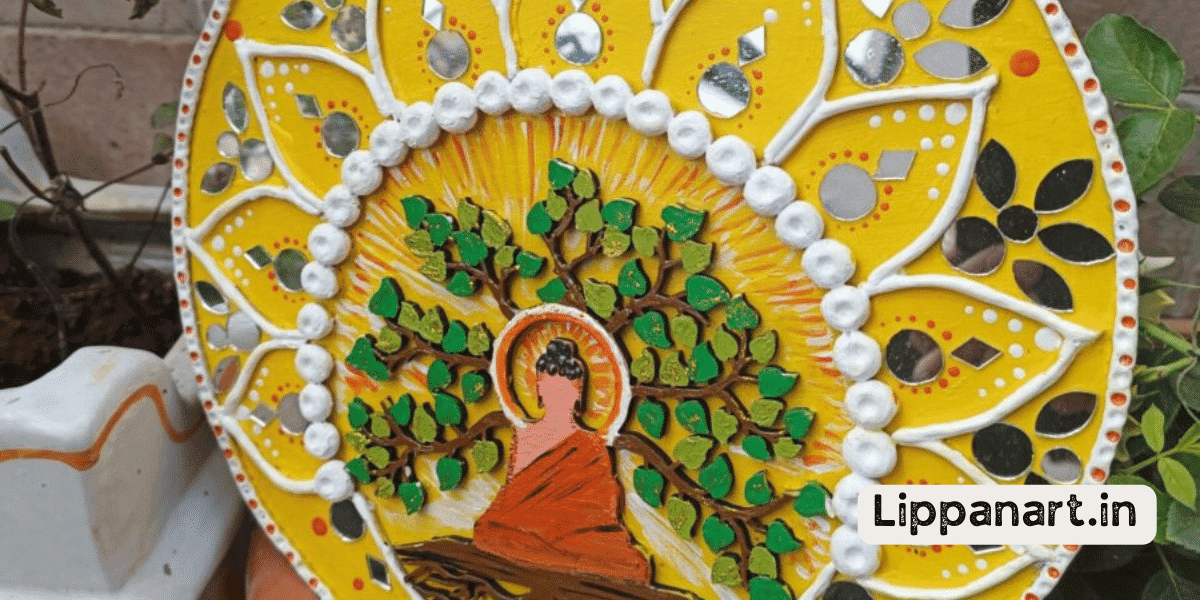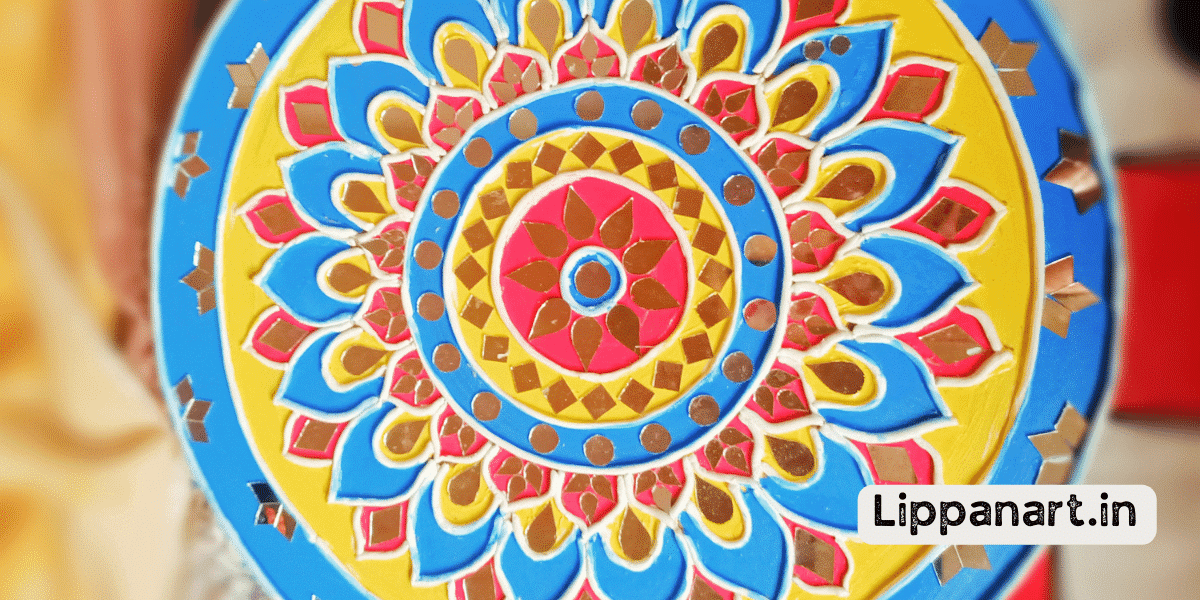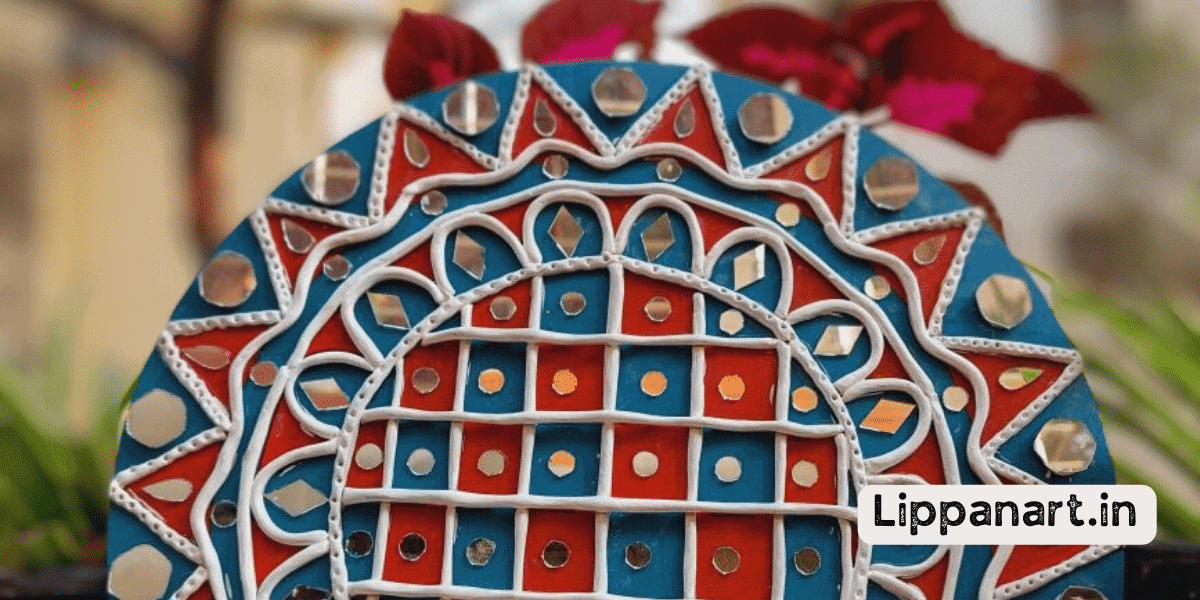Picture yourself in the Sistine Chapel, admiring the breathtaking frescoes created by Michelangelo centuries ago.
Fresco art is an ancient form of painting that has captivated audiences for millennia. It’s an exciting art form that involves grinding dry-powder pigments in pure water and applying them to freshly applied plaster.
In this article, you’ll learn the history, process, and significance of this unique form of painting.
Key Takeaways
- Fresco painting uses water-based pigments on freshly applied plaster, creating a lasting bond between the pigment and the surface.
- It is ideal for making murals and lends itself to a monumental style.
- The colours in fresco paintings are made by grinding dry-powder pigments in pure water.
- Fresco paintings have great permanence and resistance to ageing due to the imbibing of colours into the wet plaster.
Defining Fresco Art: An Introduction
Fresco art is a method of painting water-based pigments on freshly applied plaster. It has been used since ancient times to create stunning murals and works of art. This type of painting is known as buon fresco. It involves the application of three successive coats of plaster onto a wall, with the final layer known as an intonaco. This layer provides the foundation for the painter to transfer the outlines of the design from a full-scale cartoon and then fill it in with the dry-powder pigments diluted in water.
The colours become bound with the lime and sand particles in the plaster, giving it great permanence and resistance to ageing. With its matte surface and monumental style, fresco art is perfect for creating grand murals. The secco technique is also used, dispenses with the complex preparation of wet plaster and is useful for detailed painting and retouching true fresco.
Many cultures historically used fresco painting, which became popular during the Italian Renaissance and was employed by artists such as Michelangelo and Raphael. Fresco art may have been superseded by oil painting in the mid-16th century, but Mexican muralists and Francesco Clemente have since revived it.
Fresco Art History: Origins and Evolution
You may be surprised to learn that fresco art has been around since the Minoan civilization and was used by the Ancient Romans. The technique of fresco painting involves applying water-based pigments on freshly spread plaster. The colours are made by grinding dry-powder pigments in pure water. It has a matte surface, dries, and sets with the plaster to become a permanent wall part.
Here are five things to know about the history of fresco art:
- It has been used to create monumental murals since the Minoan civilization
- Intonaco is the final smooth coat of plaster used in the buon fresco technique
- Lime is an important component of the plaster used in fresco painting
- During the Italian Renaissance, fresco painting peaked and became a prominent art form.
- Fresco secco is a technique used for detailed painting and retouching true fresco.
Fresco painting is known for its permanence and resistance to ageing, as the colours are imbibed into the wet plaster and become bound along with lime and sand particles. Corrections must be done on a fresh coat of plaster or using the secco method. Later, oil painting largely supplanted fresco in the mid-16th century, but it was briefly revived in the 20th century by Mexican muralists and Francesco Clemente.
Fresco painting remains an important part of art history, having been used to create some of the most iconic works of art of all time.
Fresco Technique: How it’s Created
Creating fresco artwork involves a complex technique, including three successive coats of plaster and painting with water-based pigments. The artist first transfers the design’s outlines onto the wall from a full-scale cartoon. Boundaries of each section of fresh plastering are carefully confined along contour lines while a final smooth coat of plaster is troweled onto the wall.
Tracing is held against the fresh intonaco and used as a guide for painting the image in colour. Fresco artists use dry-powder pigments in pure water to create the colours, which are then imbibed into the wet plaster and bound along with lime and sand particles, giving the colours great permanence and resistance.
The technique also includes the secco method, which dispenses with the complex preparation of wet plaster. Drywalls are soaked with limewater and painted wet for detailed fresco painting and retouching.
The permanence and resistance of fresco painting depend on the artists’ technique, as mistakes can’t be corrected by overpainting and must be done on a fresh coat of plaster or using the secco method.
Fresco Types: Buon vs. Secco Frescoes
Comparing the two types of frescoes, buon fresco and secco, will help you understand the differences in technique and application.
Centuries ago, frescoes were the preferred painting technique for interior walls. Since then, the two main types of frescoes have been buon and secco.
Here are some of the key differences between them:
- Buon fresco is painted on wet plaster, where the colours become bound to the surface and become permanent.
- Secco fresco is painted on dry plaster, where the colours form a surface film.
- Buon fresco requires careful preparation of the wall plaster, while secco does not.
- Buon fresco is ideal for making murals, while secco is better for detailed work and retouching.
- Buon fresco has a matte surface finish, while secco frescoes have a glossy finish.
Overall, both painting techniques have their unique advantages and disadvantages. Buon fresco is more durable and permanent but requires precise technique and preparation. Secco fresco is more versatile and can be used for detailed work, but it is more permanent than buon fresco.
Fresco Materials: Pigments and Plaster
Regarding fresco painting, you need the right materials, like pigments and plaster, to achieve your desired result. Pigments are usually made by grinding dry powder in pure water and are used to create the desired colour for the fresco. The pigments are then mixed with a lime plaster to apply a paste to the wall surfaces.
The mixture is then applied to the wall in three successive coats, and the outline of the design is transferred onto the final coat of plaster. The pigment particles create a matte surface, are imbibed into the wet plaster, and become bound with the lime and sand particles, giving the colours great permanence and resistance to ageing.
The contrast between fresco and oil painting is that oil paintings can be overpainted to correct mistakes. In contrast, fresco paintings demand technical skill, and corrections must be done on a fresh coat of plaster or using the secco method.
- Editor’s Choice
- Best Seller
- Amazon Choice
Famous Fresco Examples: Iconic Works
You’ve likely heard of famous Italian Renaissance fresco painters like Michelangelo and Raphael. Here are a few of the famous fresco examples that have been admired for centuries:
- Scene in the Sistine Chapel: Michelangelo’s monumental frescoes in the Sistine Chapel in Rome
- Bull-Leaping Fresco: The Minoan bull-leaping fresco, which dates back to the 15th century BC
- Masaccio’s Holy Trinity: Masaccio’s Holy Trinity, which is considered one of the first great masterpieces of art
- Raphael’s Stanza Murals: Raphael’s Stanza murals in the Vatican which depict scenes from Greek and Roman mythology
- Francesco Clemente: The frescoes, created in the 20th century, depict the artist’s visions of the human condition.
Fresco painting is an ancient art form used since the Minoan civilization and by great Italian Renaissance painters. It involves painting water-based pigments on freshly applied plaster, and the colours become bound with lime and sand particles, giving them great permanence and resistance to ageing.
Fresco painting requires great skill as mistakes can’t be corrected by overpainting, but the secco technique can be used for detailed painting and retouching. Iconic works such as Michelangelo’s Sistine Chapel and Raphael’s Stanza murals are just a few examples of this timeless art form.
Fresco Art in Renaissance: Revival Period
During the Renaissance, fresco art revived its popularity, allowing it to be admired again. The traditional fresco technique involved applying layers of wet plaster to a wall. An artist would transfer the design from a full-scale cartoon onto the wall. The boundaries of each section of fresh plastering were carefully confined along contour lines, and the final smooth coat (intonaco) of plaster was troweled onto the wall. Dry intonaco was used for detailed painting and retouching true fresco. Wet intonaco was used for painting the image in colour.
Notable examples of famous frescoes during this period include Cimabue, Giotto, Masaccio, Fra Angelico, Correggio, and Michelangelo’s Sistine Chapel ceiling. The colours of fresco paintings were made by grinding dry-powder pigments in pure water and had great permanence and resistance to ageing. However, fresco painting demands technical skill, as mistakes can’t be corrected by overpainting.
Oil painting largely supplanted fresco painting in the mid-sixteenth century but was briefly revived by Mexican muralists and Francesco Clemente in the twentieth century.
Preserving Frescoes: Challenges and Care
As a fresco aficionado, you know the importance of preserving these works of art and the challenges that can arise in protecting them. Frescoes are a unique decoration medium due to their use of earth pigments, traditional techniques, and the history of fresco painting.
Here are some key points to keep in mind when caring for your frescoes:
- Use conservation methods that are appropriate for the type of fresco medium used
- Monitor humidity, temperature, and air quality to ensure optimal conditions in the environment
- Take preventative measures to reduce physical contact and other sources of damage
- Take steps to remove dirt and grime from the surface of the fresco
- Regularly inspect and document any changes in the condition of the fresco to aid in conservation efforts.
Preserving frescoes requires an understanding of the medium and the environment in which it’s placed. It’s important to be aware of the factors that can compromise the stability of a fresco and take the necessary steps to protect it.
Fresco Art Today: Contemporary Expressions
Today, you can explore a variety of contemporary expressions of fresco art, from the traditional to the modern. Fresco art is used in various ways, from adorning palace walls to creating wall paintings. The style and subject matter of fresco art have evolved, with modern interpretations often more abstract.
| Style | Subject Matter | Examples |
|---|---|---|
| Traditional | Religious figures | Michelangelo’s Sistine Chapel |
| Modern | Abstract shapes | Francesco Clemente’s Palazzo degli Elefanti |
Fresco art can be used to make a statement or tell a story, and it can be used to transform a space. The use of fresco art in modern contexts is growing as more and more people are drawn to its timeless beauty and unique texture. Fresco art is a great way to add a touch of sophistication to any space.
Appreciating Fresco: A Unique Art Form
Appreciating fresco is a unique way to add a touch of sophistication to your space. Fresco art is an ancient form of painting found in many cultures, including Greek, Roman, and Byzantine. It involves the application of pigments to freshly laid plaster to create a permanent image.
Here are five things to keep in mind when appreciating fresco:
- Frescoes can be found worldwide, such as in Sri Lanka, where ancient Buddhist frescoes can still be seen.
- Contemporary fresco art is being created by Mexican artists, such as Diego Rivera, who revive the old artwork.
- Medieval frescoes, such as those found in churches and cathedrals, often feature elaborate scenes with vivid colours, including gold and blue pigments.
- Fresco painting is an art form with its own rules and techniques, and it requires careful planning and execution.
- Many frescoes feature central scenes that tell a story or depict a scene from mythology.
Appreciating fresco is a unique way of admiring an art form that has been around for centuries. It’s an art form that requires technical skill and a keen eye for detail. Whether you admire the ancient frescoes from the past or the contemporary ones of today, you can appreciate the beauty and sophistication of this unique art form.
Conclusion
Fresco art is a unique art form that has been used for thousands of years and continues to be appreciated today. It’s a symbol of permanence and resistance, a reminder of our cultural history and a source of inspiration for the future.
Fresco art is timeless, a powerful expression of beauty that will remain with us for generations.














